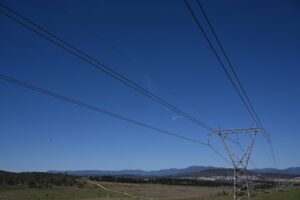
In 2016 the International Energy Agency (IEA) has adopted a more informed vision in a new report the World Energy Outlook Special Report on Energy and Air Pollution, launched today, that involves a more global evaluation of energy trends, acknowledging shortcomings in its prior primary focus on developed, western countries.
The World Energy Outlook Special Report on Energy and Air Pollution is a new study that provides a number of key insights into global energy market trends.
The IEA clearly reports that fossil fuel use results in 3 million deaths annually. Apart from dismissing the science of climate change, anyone parroting the mantra that ‘coal is the lowest cost source of electricity’ is clearly also putting a pretty low value on human life.
The IEA’s conclusions under the Clean Air Solution are clear:
- Global energy demand is modeled to be 15% lower due to the greater urgency in implementing energy efficiency initiatives relative to the IEA’s 2015 New Policies Scenario. Energy efficiency is forecast to drive a 2.9% annual reduction in energy intensity of global economic activity;
- Renewable energy uptake is forecast to accelerate substantially. The IEA models renewable energy (excluding hydro electricity) developing at a compound annual growth rate (CAGR) 7.6% over 2013-2040. Thus the IEA forecasts a doubling of electricity generation from renewables in the seven years to 2020, another doubling in the decade to 2030 and again doubling in the following decade; and
- Global coal consumption peaked in 2013 at 3,909 million tonnes of oil equivalent (Mtoe), declining to 3,849Mtoe by 2020 and further to 3,253Mtoe by 2040. This represents a CAGR of -0.7% for 2013-2040.
IEEFA continues to view the IEA scenario assumptions as underestimating the combined impact of: a global policy push to limit climate change; the acceleration of technology developments across energy efficiency, smart grids, renewables and battery storage; and continued double digit annual declines in the cost of solar.
Whereas the IEA expects global coal consumption to decline at an orderly -0.7% annually, there is nothing orderly about the 28.8% year-to-date year on year (yoy) decline in US coal,[i] nor the 8.4% yoy year-to-date decline in coal production in China.[ii]
The IEA Energy and Air Pollution report provides a detailed analysis of air pollution impacts of fossil fuels, including Particulate Matter, sulphur oxides, nitrogen oxides, carbon monoxide, volatile organic compounds, ammonia and ground level o-zone.
This World Health Organisation concludes that 6.5 million premature deaths annually are attributed to air pollution – more than one in every nine deaths worldwide. Indoor air pollution from burning kerosene and biomass kills an estimated 3.5 million annually, and outdoor fossil fuel air pollution kills another 3 million. Particulate emissions from coal combustion is identified as the key underlying factor.
The IEA calls on a A-I-R typology: Avoiding pollutant emissions by rapidly developing renewable energy sources and a global tightening of efficiency standards, Innovating to reduce pollution abatement costs; and Reducing pollutant emissions by stringent emissions limits on all fossil fuel combustion activities.
The report identifies that fuel quality is an important determinant of the eventual impact on air quality. The IEA distinguishes the high ash content of Indian coal at the negative end of the spectrum, and cites very low-suphur coal from Indonesia at the positive end (notable absence was any lobbying about Australian coal qualities).
The IEA report highlights the dual impacts on China’s electricity sector of “the overarching structural economic transformation” to less energy intensive economic sectors and the “profound diversification of the power generation mix away from coal.”[iii] Coal drops from over 75% share today to less than a 50% share by 2040. IEEFA agrees with this analysis but would suggest this threshold will be achieved a decade earlier than the IEA currently anticipates.
Tim Buckley is the Director of Energy Finance Studies, Australasia for IEEFA. He has 25 years of financial markets experience, including 17 years with Citigroup culminating in his role as Managing Director, Head of Australasian Equity Research.








